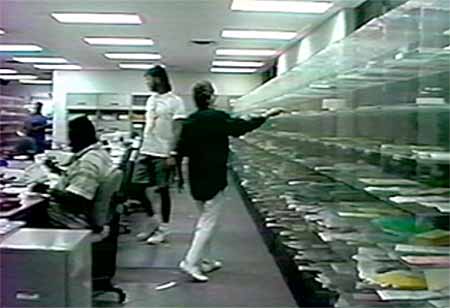Imagine you’re flying from New York to San Francisco in a plane that requires 7000 gallons of fuel to make the trip. Which of the 7000 is the most important gallon? The obvious answer is the gallon currently powering the engine, so long as there are at least 7000 gallons in the tank.
Of course attempting the flight with less than the required number of gallons renders the question of a most important gallon senseless. Either the total amount of fuel required to complete the flight exists or it doesn’t. It should be obvious that the same kind of thing is true for a company, campaign, or charity.
And yet, we’re regularly asked, “What is the most important resource required to bring about success?” Our answer is always the same. There is no such thing as the most important resource. For any given circumstance, a resource is either necessary or it isn’t. That means all necessary resources are of equal importance; a fact that requires close inspection.
The word “resource” is often used interchangeably with the word asset. But resources are not the same as assets. Resources are the elements with which assets are obtained. Further, when one examines the resources available to an organization, any organization, all organizations, and reduces those resources to their fundamental irreducible parts, it becomes evident that an organization has only three resources: time, money, and talent.
At a basic and invariable level every asset can be expressed in terms of time, money, or talent. An organization deficient in any given asset need only spend some of its time, money, talent, or some combination of each, to acquire the asset in question.
For instance, product development, polling, and trash removal are assets that any organization can obtain in exchange for time, money, talent, or some combination of each.
By its nature, trash removal will likely demand less time, money, or talent than product development or polling. This does not mean trash removal is less important than product development or polling. This means only that procurement of trash removal service will likely place less of a demand on time, money, or talent than will procurement of product development or polling.
We use the adverb “likely” because while some combination of time, money, or talent can always be traded for assets, they cannot always be traded for each other. Indeed the degree to which time, money, and talent are interchangeable varies greatly based upon circumstance.
A San Francisco bound plane, sitting on the tarmac in New York, with 6850 gallons of fuel in its tank, will pay the going rate for the 150 additional gallons of fuel required to make the trip. It simply doesn’t matter if the money to acquire the additional fuel is much less, much more, or about the same as the per gallon cost of the fuel already in the plane’s tank. Without the additional fuel the plane will not reach San Francisco. Nothing can change this circumstance.
Circumstance freezes time. A failure to acknowledge circumstance almost always leads to the ill-fated “we’ll worry about it when we get there strategy.” By definition, “when we get there” is a circumstance — a moment of frozen time. Indeed circumstance dictates that there will be no time available to “worry about it when you get there.”
Assets can always be expressed in terms of the basic and invariable resources: time, money, and talent. Asking the importance of each is exactly the same as asking the importance of each gallon of fuel in the tank of an airplane. Either there is enough to make the trip or there isn’t.
The Most Important Resource
March 17, 2014 by Bob Manna & Matt Manna
Version: 6A24A6C8(R01) • Mar 17, 2014
Photo © alphaspirit — Fotolia.com
Download
The Most Important Resource (PDF)
Related
Article – On Replication
Article – Projection vs. Prediction
Article – Talent
